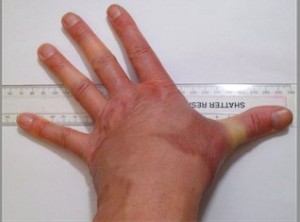Most massage therapists charge by their time spent in a session, so dealing with client cancellations and no-shows is a particularly dear subject.
Big massage businesses just put their policies out there: 24-hour cancellation or full charge for the missed session. No appointment without a credit card to “guarantee a reservation.” It is a survival tactic that keeps the bills paid.
But what happens when the massage is not part of a big edifice of business complete with a receptionist to state the policy? Massage is a client-based business, after all. Can you afford to alienate a client for a missed appointment? Can you nicely charge folks for services not rendered? Is a cancellation policy a must or a risk for the small massage practice or clinic?
Those questions are an excellent place to start when considering your practice and its future. But keep in mind that massage therapists tend to be quiet, healing people who do not like confrontations, especially with those people seeking relief from stress. If you don’t have any policy stated up front, you may be in the position none of us healing people like: broke and behind in the bills.
Aaargh. Yes, boundaries. Those darn things hopefully they talked about a lot in massage school. Is there a middle ground? Can a therapist walk the fine line between impersonal business policy and caring personal service? And still pay the bills?
This is a tough subject. Why? Because out there in the universe, most people are honest and upfront and understand that you need to be paid for your time. Then there are others who feel every nickel saved on a cancel fee is a personal victory attesting to their ability to avoid paying for anything. Yes, these are the legendary “cheap clients” who will turn your book into a sea of red ink if you are not careful.
Airlines and other big shops generally don’t give money back or reverse charges. They have found out the hard way that when a big biz is involved, many people perceive lying to not be charged or to get your money back is okay fibbing. Hey, the airlines can afford it, right? Well, not really. Big shops have to defend themselves.
The most important thing here is that if you have a “cheap client” with a great excuse is to get rid of them. A cancellation policy will do that. Otherwise these folks will suck your energy dry with no regrets.
Sometimes, yes it happens, the client is actually using the no-show as a way of firing you. It says in a big way that the client does not value the service. It means “cya.” Whatever is going on, this is the client you will be relieved to remove from your book. If that client ever calls again, they pay the no-show fee before getting a massage for their “emergency.”
In the big and small picture of customer service, I think it is important to respect your skills enough to have a firm cancellation policy. It can be full charge, half charge, whatever you want, but have it. And when a regular client who appreciates your work has a true emergency, it is okay to say “no charge.” That will be appreciated. After all, small business is personal, eh?
Tag Archives: freedom to practice
Good Fences Make Good Massages…
The other day, whilst talking to massage therapist friends about the best and worst places to do massage, we came up with lots of candidates for best, but the worst won hands down: beauty salons.
Yes, it has happened to many massage therapists. It may have been a fill-in job during massage school or a way to circumvent crazy local regulations, or just a desperate attempt to pay the rent. We had all, at one time, worked in a beauty salon.
Going in, we all agreed it looked like a great opportunity. A room in the back of the place, a built-in foot traffic that might be interested in massage, and a few people hanging out there to talk to when it was slow.
My friend said: My first day I got a lecture about why I had to wear make-up. I don’t know a lot of massage therapists that wear make-up because it slides off in the first 10 minutes of a session. I actually had to tell the salon owner that we sweat.
My other colleague stopped mid-sip in her Starbucks. She said: I got to wear a Minnie Mouse uniform with cap sleeves and a skirt. I felt like I was about to parade down Main Street. Our salon owner thought all the spa people should wear dresses so we looked cute. Meanwhile, everyone in the rest of the salon wore black jeans and T-shirts.
This brought back my own memories. It was a part-time job during massage school. The salon was a seething cauldron of drama. The stylists liked to unload about their unhappiness in the area where they mixed color – right outside the door of my massage room.
Asking people to hold it down or take their conversations elsewhere led to chaos. After more than a few jabs about being too quiet for a salon, I fled shortly after graduation from massage school. Much to my surprise, a few clients found me. One told me she just put up with the salon because she liked the massage.
I left salon world, happily, for better-designed spas and medical offices. My spa kept the hair stylists corralled in a separate room with a real door. No drama.
Much to my horror a client confessed to me one day that he was a salon owner and wanted to develop a spa-salon combination. Would I be interested?
Been there, done that I said. But a salon needs separation from a spa environment. How about a real door and a real wall across the back half of the salon? That way the sanctuary could be established.
He asked me to visit the place when it was remodeled. Yup, a real wall and a real door. It was very successful.
Massage to Measures
Massage therapists like to think we help people deal with stress, injuries and fatigue. But how do we know we help?
Massage is, after all one-on-one. We are stars or idiots one hour at a time, and we often don’t take much credit for our clients’ successes or failures. Is a massage therapist a facilitator or a game-changer? Do we really know?
I’m reminded of the times I thought I had no clue what I was doing, only to have the client hop off the table and give me a compliment and a big tip.
But I also remember that once on vacation – after one particularly hideous massage from someone who thought they were fantastic – that I said thank you and left a tip anyway. I made a mental note of the therapist’s name in case I ever happened to go to this resort again so I could get someone else.
How we measure ourselves and our effectiveness in massage therapy is something of an emerging issue. In a practice that is more art than science, can we really measure ourselves?
People have often received treatments for medical conditions that have no proof or promise – but the treatments are tried in the belief that they may relieve suffering or repair the underlying condition. That is the art of medicine.
Can we also preserve the art of massage while some therapists attempt to move into the medical – and the reimbursed – field?
A recent post by long-time and very respected massage instructor Noel Norwick of Los Angeles asked the question on Facebook.
His question on medicalmassage@groups.facebook.com group referred to a study. It found that soothing talk – reassurance – worked just as well as physical therapy treatment after whiplash. Here’s the link: http://www.bodyinmind.org/treating-whiplash
It appears to say that treatment versus soothing talk have the same results. My comment was that it might say much about the quality or delivery of treatment instead of its effectiveness in the right hands.
Would that be the case if reassuring talk were compared to massage? I think not. Hope not. But let us ask this question another way – if we could offer nothing hands-on, would we offer reassuring speech? Isn’t that sometimes the de facto treatment for stress disorders – even though many of us would propose that massage would be much better?
Plans, Practice and Control
It is a new world for the massage therapist, just as it is for many other personal services industries.
App companies are going whole hog into personal service. Rides, house-cleaning, errands, baby-sitters, pet-sitters, and yes, massage therapists. Where is it heading? For a big thumping collision as we struggle to define ourselves, our employers and our clients….
Oh yes, big questions. It’s going to be a bumpy ride. Hang on.
Are app companies employers? Are service providers employees or clients? Are clients users or beneficiaries? Who cares? Massage therapists care because the answers to those questions will determine how much money we make, how much we pay in taxes and how free we are to make decisions in our professional lives.
Here’s how it shakes out: Google is an advertising service that provides therapists with a way for people seeking their services to find a provider – and leaves the rest of the transaction up to the therapists and clients.
The app services are vetting providers, setting prices, presentation, times and even setting tips. The amount of control they have means they appear to be employers, not middlemen. If a therapist wants to provide more or charge more, they are not able to.
A therapist is not an independent provider of service when someone else sets the price and pay. If a therapist is not independent, then basic labor laws about employees apply.
The bottom line for therapists is that it is all about control. Control of prices, providers and policies such as tipping makes apps employers. That means the app gets to pay a lot more money in taxes for Social Security, payroll, disability, etc. that would otherwise be paid by the therapists.
There’s been some talk that the new services may yield a new classification of worker – the dependent contractor. That’s where the therapist would be a service provider who would pay less in taxes in exchange for less control. But will the apps pay the taxes? And pay for the benefits? Stay tuned.
In the interim, the people who may be the biggest targets are small businesses who have called their employees independent contractors to avoid higher costs. If the apps can’t have independent contractors, then spas and clinics can’t either. That will make major changes in the way multiple-therapist businesses operate.
Meanwhile, a massage therapist’s best bet remains Google or the other online search providers. People looking for a massage can find you in an efficient way. If they do not want your services, or don’t want to pay your price, they will find someone else who better matches their needs.
Massaging with Partners
Most successful massage therapists come to a time in their careers when they think about going out on their own. They have worked in spas, medical offices or chain clinics and they have an itch to move out and become independent.
Then the question comes up. Why risk all in business? Why not seek out another therapist to partner with?
It’s a natural question and the list of advantages sounds enticing. Half the workload, shared space, some extra hands to help.
I posed the question to my business advisers – a successful small businesswoman, an accountant, a private practice acupuncturist and an attorney: Would a partnership be a good idea?
Here’s what they said:
Businesswoman: It sounds good at first, but partners often don’t do half of the work. They don’t want to clean, or they don’t want to do books or pay for bookkeeping, or they want to take lots of time away from the business. Then when it comes to splitting profits, if there are any, they want half for less work. You will spend more time fighting about issues than just making decisions and implementing them.
Accountant: Partners are great if they have the same work ethic you have. I have never met someone with the same work ethic as me. I have seen people who blow things off if it is inconvenient, or worse, blow off the customers. I work alone.
Acupuncturist: I took on a partner in a real estate investment because I could not afford it on my own. The partner has been extremely difficult to work with. He was supposed to be a silent partner, with me managing the investment. He’ll decide he needs to check on things and comes in and meddles. As soon as he causes problems with the employees, he disappears and leaves me to fix the problems he creates.
I have tried two times to buy him out. Even though it is a good deal for him, as he would get his investment back plus some appreciation, he has backed out at the last minute because he thinks he might be missing out on some money. I just want him out for my peace of mind.
Attorney: If more than half the people with all the best intentions in the world – who know each other intimately – cannot make marriages work, why would you think partnering with someone else would work?
I have to admit I wasn’t prepared for a trip to the dark side of partnerships when I asked my experts. First, I was very glad I asked the question. Second, I took the partnership idea and sent it sailing into the circular file of doom.
Partners? It’s a great idea. Has any massage therapist out there managed to make it work?
Knowing Your Client – What Works For One Person Doesn’t Work For All
In the early days of a massage therapist’s career, discovering which techniques work well in a treatment session can be baffling.
Is it deep tissue? Soothing strokes? Is it short sessions? Long sessions? Is it movement? Breath? Is it the clients’ mindset? Perceived value? Desire?
Somehow fumbling about in our dim-lit treatment rooms we establish our patterns of understanding, and hopefully we can match those up to our clients’ expectations.
But ask a room full of massage therapists what works can be maddening. Folks who otherwise feel compassion for others can get rigid about their thinking. After all, if something works for them, should it not work for everyone?
It’s a hard fact of life that what works for one person doesn’t work for all. Yet we as a profession are constantly trying to define and establish “scientific” protocols for what works. An effort of little reward, it seems, for therapists and their clients. It does seem to fill up chat rooms and discussion groups.
I saw a lot of this discussion in other professions, as I spent much of my first career reporting on medicine and health sciences. People in these professions don’t want to do any harm, but they want to alleviate suffering and improve lives. Complicating that is the fact that outcomes vary widely. Protocols often work far better for one doctor over another, and for one facility versus another.
The human factor, a long-time friend explained, is what drives people a bit crazy in clinical practice. Was it the protocol or the nurse/doctor/therapist/team/facility or the family prayer group in the waiting room? Is the new drug a wonder pill or is it the selection of patients and monitoring of its use?
I suspect the answers in massage therapy may be about as difficult to vet as it is in medicine. Meanwhile, we practice in the dim-lit rooms of our vocation. If lucky, our clients will tell us what we need to know.
The Path to Progress
The footpath from the subway to my university led up the Boston Commons through the State House and down to the other side of Beacon Hill. I took the path often, going to the right side cut-through of the State House to avoid the somber figure sitting on a stone bench in front of the left wing.
It was just a statue: a pretty woman, dressed plainly, sitting on a bench. Sorrow and determination etched in her face; she leaned forward. The statue’s never-changing sadness gave me the creeps. Besides, when I took the right-wing entrance of the Massachusetts State House, I could grab a bagel before class.
Curiously, I never looked to see who the woman was. I was too busy getting an education and planning my career. For something that should have whetted my curiosity, I had none. It took me away from my goals.
I am a massage therapist now, and have been for almost 20 years. As such, I am a micro-business owner. I have dealt with snickers of people who viewed massage therapists as women offering something else. As my own boss, I am free to work plenty of overtime, nights, weekends, etc., if it takes that to be successful. Massage is largely an occupation of women, and it is one of the few businesses that can be started with little capital and much elbow grease.
Not that I took any of these things for granted, no, but I missed a few pieces of history along the way.
We took a trip to my hometown earlier this year. My spouse grew up in Los Angeles and was fascinated by the history and old buildings. We stayed a few nights in Salem, its damp streets dotted by witches museums and attractions. The lore of witchery in Salem is much more attractive than the reality. The local residents suspected devil’s work in everyday life. In the 1690s courts convicted several women of witchery and hanged them. The evidence? Friends and neighbors who claimed the witches flew through the air and cast spells.
At the home of author Nathaniel Hawthorne, we saw the family tree written on the wall. The Hawthorne’s surname was amended to avoid association with the hanging judge at the witches’ trials. The family was ashamed of that history.
In Boston, we took the open-air tourist trolley to avoid the stress of driving and parking. It stopped at the State House steps. Right in front of that darned statue.
Our tour guide/bus driver gave us the spiel: “That’s Mary Dyer, the Quaker hung from a tree near Boston Common for her heretical beliefs. The Pilgrims came here for religious freedom, but just for their own religious freedom. No one else was welcome. They wanted to make a Pilgrim Utopia so in 1660 they hung an innocent woman for being a Quaker.”
The state court had the statue erected in 1959 to remind lawmakers and judges of the folly of requiring every citizen to have the same beliefs. The early state of Massachusetts was a tyrannical state: Everyone had to support the ministers’ teachings or face court penalties. They were locked into stocks, whipped, had ears cut off, and banished. If they did not publicly repent, the government, one and the same as the church, took away rights to vote, own land, own businesses, and confiscated their weapons.
Mary Dyer had been sentenced to death a year before her hanging, and was saved from the gallows by her husband. He was still a Pilgrim, and though the family had moved to Rhode Island to get away from persecution he still had some influence with the court judge. He promised that she would stay away from Pilgrim settlements and took her home.
A year later Dyer returned and asked that the authorities reverse their unjust laws. Instead, they decided to enforce the sentence of death. She and two other Quakers who refused to be compliant with Pilgrim law were hanged on the same day. She held hands with the men as she walked to the hanging tree, and people in the crowd criticized her for touching unrelated men. Neither men nor women were free in the Utopian state of the New World.
Well, my education continues. I now see why Mary Dyer sits so sadly, and why so many of the Pilgrims descendants who crafted our Constitution vowed to separate church beliefs from state laws. I think those formative steps taken so many years ago have led to our freedoms today. To be free to touch others and to massage, to live, to educate our children and ourselves. Mary Dyer was a very brave woman, in deed.
(For more information about Mary Dyer’s life and death, and her influence in history, let me recommend Wikipedia’s listing. Also, “Mary Dyer: Biography of a Rebel Quaker” by Plimpton, Ruth, 1994.)
